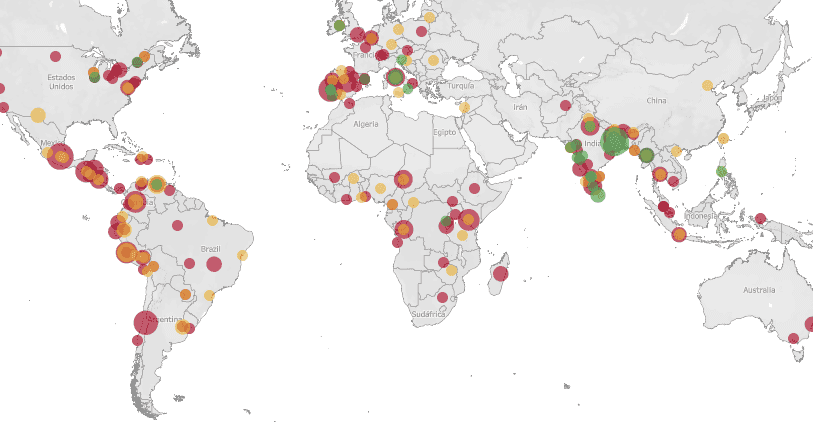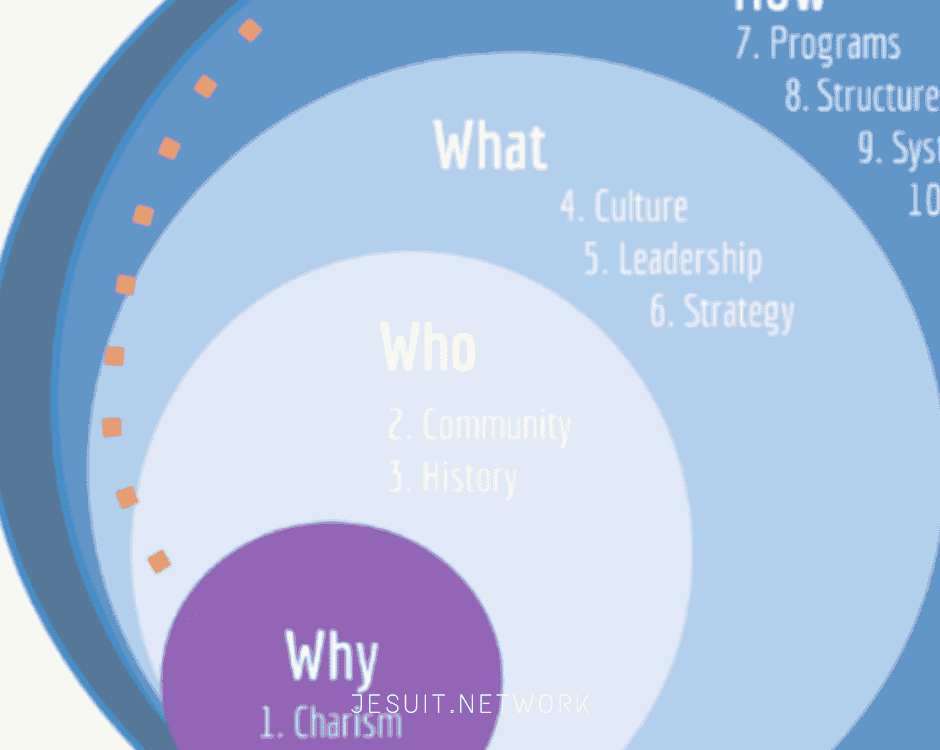This website uses cookies so that we can provide you with the best user experience possible. Cookie information is stored in your browser and performs functions such as recognising you when you return to our website and helping our team to understand which sections of the website you find most interesting and useful.
Wiring the universal apostolic body
Jesuit Strategic communications and networking on the COVID era
We may be experiencing one of the key global turning points of our time. This juncture, despite the serious impact it has on so many levels, has given rise to another way of relating, of understanding ourselves in the world context, of seeking new ways of living and, as Jesuits, new ways of living the mission. The COVID has meant a health crisis of planetary dimensions, the socio-economic consequences of which have yet to be seen, but it has also meant a boost to what was already in the making for years: an explosion of apostolic connectivity. We are not (only) talking about the digitalization of communication: it is about the enormous possibilities of networking for the mission of the Society of Jesus.
Although this is a process that began in the 1970s, it has been in the last 12 years that supra-provincial collaboration in the Society of Jesus has exploded. Collaboration and networking have been promoted in GC35 as a key element behind the universality of mission, and in GC36 they have been upgraded as two axes of our new way of proceeding: “Discernment, collaboration and networking offer three important perspectives on our contemporary way of proceeding” (GC36 D2, n3). This progressive evolution created the conditions of possibility for the networks that, during this time of pandemic, have proven to be key to the promotion of collaboration and cohesion of the apostolic body in the Society of Jesus.
There are several key variables in this process that allow us to establish the framework in which we found ourselves by March 2020, when the COVID was recognized as global pandemic:
- The development of communication technologies at the international level in the Society of Jesus has advanced significantly, especially after the last General Congregation and the strengthening of the Rome Communication Team, which -since then- has been efficiently and constantly coordinating the communication counterparts of the conferences and major international apostolic works. One of the best examples is the evolution of jesuits.global.
- Since 2008, secretariats in Rome have been exploring different models of international networking that work with a certain efficiency providing the possibility of global coordination and dynamization of the apostolic sectors together with the delegates of the conferences.
- Since 2016, the Office for Apostolic Planning and Discernment allows for coordinated work between secretariats, their networks and communication teams, and incorporates two key elements in this culture of collaboration according to the GC36 triad: discernment and networking, personalized in two of its transversal projects: discerningleadership.org and jesuit.network.
- Finally, and as part of all the above, the process of elaboration and proposal of the Universal Apostolic Preferences, culminated in 2019, establishes a unique conceptual framework around the universal mission that from now on favors coordination, apostolic alignment and collaboration at the international level in a way unthinkable in previous times.

Thus, accompanying the culture of international Jesuit collaboration with our principle of Ignatian MAGIS and with a mission that is increasingly being formulated universally, we have learned that there are missionary challenges to which we cannot respond individually, that the Society needs its entire apostolic body for the complex response to some of the dynamics that are impossible to address at the province or conference level.
“There are missionary challenges to which we cannot respond individually, that the Society needs its entire apostolic body”
It is important to acknowledge that the Jesuit response to the challenge of the COVID was predominantly local, prioritizing the accompaniment of populations, dynamics and contexts from our apostolic works and provinces. However, from the very beginning of this crisis, we were able to observe several international collaborative dynamics favoured by the above-mentioned conditions of possibility. Here are a few that are worth mentioning:
- One of the first initiatives proposed to add the available information on the impact of the COVID on all the works of the social sector at the global level. Accessible at covid.xavier.network and updated for the fourth time in December 2020, it is a mapping of an unprecedented scale drawn up by the Xavier Network in collaboration with the Secretariat for Social Justice and Ecology in Rome.
- In view of the proliferation of digital initiatives in the provinces, at the beginning of April the Curia of Rome launched the initiative jesuits.online as a platform to make visible and accessible all the proposals for accompaniment that were being created in the first weeks of the pandemic.
- In an attempt to promote unity of mind in the midst of the pandemic, the Secretariat of Faith in collaboration with jesuit.network launched on May 30th the first global vigil of Pentecost, bringing into play all the Ignatian networks. This model of joint energisation of the international body was again activated in September for the ‘Breathing Together’ vigil with the Secretariat for Social Justice and Ecology.
- The networks of the secretariats of higher education (iaju.org) and secondary and pre-secondary education (educatemagis.org) have also been promoting the aggregation of good practices and in-depth reflections on the crisis through international repositories and webinars. Both networks have recently updated their global maps, in the same direction of fostering -more and more- a sense of belonging to an international body with a shared mission.
- In the last stage of this complex time, we have been able to observe the emergence of workshops, talks and seminars of all kinds, with proposals for action or reflection at different levels of collaboration. The main ones have been collected at jesuit.network/proposal/

These are just some of the emphases that we could make of what has been happening in the international Jesuit scene in recent months, as a wiring of the apostolic body, which is increasingly cohesive and linked, susceptible to dynamics and processes of ever wider agency. Since 2012 the project jesuit.network is systematizing information and following the reflection on all supra-provincial Jesuit networks and trying to be a place of connection and visibility for those networks, initiatives or institutions that want to carry out international collaborative projects in the framework of the mission of the Society.
“At the end, the key to networking is whether we are ready to be part of something bigger than ourselves“
Let me finish with a quote by Pope Francis that reminds us: “We don’t come out of the crisis as the same ones, we can become better or worse, but never the same.” Every change is an opportunity for improvement and, in the case of the Jesuit network, we have seen how the new urgent needs uncovered by the pandemic bring out the interconnections between us all. At the end, the key to networking is whether we are ready to be part of something bigger than ourselves. We believe that the Jesuit network is now prepared for such proposals, and that this crisis is making this even clearer.
This article was originally written for JIVAN magazine. It can be read here.





